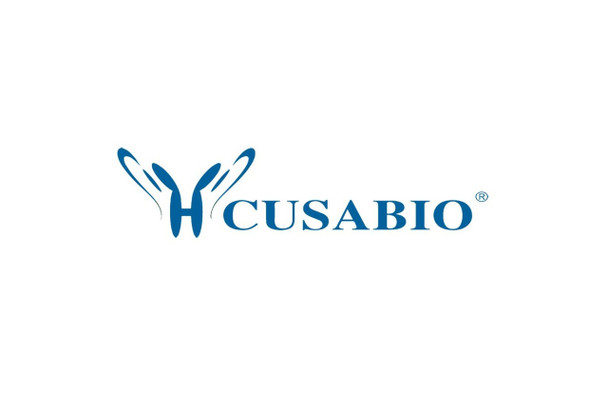Cusabio Bos taurus Recombinants
Recombinant Bovine C-C motif chemokine 20 (CCL20) | CSB-EP840478BO
- SKU:
- CSB-EP840478BO
- Availability:
- 13 - 23 Working Days
Description
Recombinant Bovine C-C motif chemokine 20 (CCL20) | CSB-EP840478BO | Cusabio
Alternative Name(s): Macrophage inflammatory protein 3 alpha ;MIP-3-alpha;Small-inducible cytokine A20
Gene Names: CCL20
Research Areas: Others
Organism: Bos taurus (Bovine)
AA Sequence: ASNFDCCLRYTERILHPSILVGFTQQLANEACDINAVVFYTRKKLAVCADPKKKWVKQVVHMLSQRVKRM
Source: E.coli
Tag Info: N-terminal 6xHis-SUMO-tagged
Expression Region: 27-96aa
Sequence Info: Full Length of Mature Protein
MW: 24.1 kDa
Purity: Greater than 90% as determined by SDS-PAGE.
Relevance: Chotactic factor that attracts lymphocytes and, slightly, neutrophils, but not monocytes. Inhibits proliferation of myeloid progenitors in colony formation assays. May be involved in formation and function of the mucosal lymphoid tissues by attracting lymphocytes and dendritic cells towards epithelial cells .
Reference: The role of chemokines in bovine respiratory syncytial virus infection.Neuenschwander S., Werling D.
Storage: The shelf life is related to many factors, storage state, buffer ingredients, storage temperature and the stability of the protein itself. Generally, the shelf life of liquid form is 6 months at -20?/-80?. The shelf life of lyophilized form is 12 months at -20?/-80?.
Notes: Repeated freezing and thawing is not recommended. Store working aliquots at 4? for up to one week.
Function: Acts as a ligand for C-C chemokine receptor CCR6. Signals through binding and activation of CCR6 and induces a strong chemotactic response and mobilization of intracellular calcium ions. The ligand-receptor pair CCL20-CCR6 is responsible for the chemotaxis of dendritic cells (DC), effector/memory T-cells and B-cells and plays an important role at skin and mucosal surfaces under homeostatic and inflammatory conditions, as well as in pathology, including cancer and autoimmune diseases. CCL20 acts as a chemotactic factor that attracts lymphocytes and, slightly, neutrophils, but not monocytes. Involved in the recruitment of both the proinflammatory IL17 producing helper T-cells (Th17) and the regulatory T-cells (Treg) to sites of inflammation. Required for optimal migration of thymic natural regulatory T cells (nTregs) and DN1 early thymocyte progenitor cells. Positively regulates sperm motility and chemotaxis via its binding to CCR6 which triggers Ca2+ mobilization in the sperm which is important for its motility. May be involved in formation and function of the mucosal lymphoid tissues by attracting lymphocytes and dendritic cells towards epithelial cells.
Involvement in disease:
Subcellular Location: Secreted
Protein Families: Intercrine beta (chemokine CC) family
Tissue Specificity:
Paythway:
Form: Liquid or Lyophilized powder
Buffer: If the delivery form is liquid, the default storage buffer is Tris/PBS-based buffer, 5%-50% glycerol. If the delivery form is lyophilized powder, the buffer before lyophilization is Tris/PBS-based buffer, 6% Trehalose, pH 8.0.
Reconstitution: We recommend that this vial be briefly centrifuged prior to opening to bring the contents to the bottom. Please reconstitute protein in deionized sterile water to a concentration of 0.1-1.0 mg/mL.We recommend to add 5-50% of glycerol (final concentration) and aliquot for long-term storage at -20?/-80?. Our default final concentration of glycerol is 50%. Customers could use it as reference.
Uniprot ID: Q8SQB1
HGNC Database Link: N/A
UniGene Database Link: UniGene
KEGG Database Link: KEGG
STRING Database Link: STRING
OMIM Database Link: N/A









